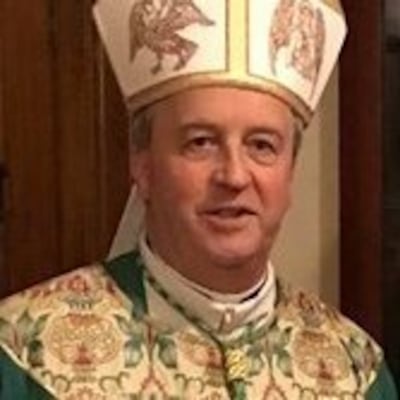In his autobiography From the Underground Church to Freedom, the Czech theologian and author Tomáš Halík describes visiting protesting students in Prague shortly after they began the Velvet Revolution that eventually toppled the communist regime in 1989.
As he walked through the university he noticed that the students had set up prayer rooms in each of the faculties. There were many who discovered God in those dramatic days and Halík realised that “at such moments, secular language and secular means of expression turned out to be too dry. Even those who previously regarded such behaviour as totally alien and foolish find the courage to pray”.
What we have just experienced as individuals and as a community over the past few months may not have had the excitement and drama of a political revolution but the upheaval it has created could hardly have been more extraordinary.

As society struggled to come to terms with the pandemic, the Church, which relies on community, suddenly found itself in a new and uncomfortable space. The communal celebration of the sacraments, especially the Eucharist, is at the heart of Catholic life. Suddenly that was taken away.
Furtive celebrations
Even in penal times, furtive Masses could be celebrated in lonely places where sentinels could keep an eye on the surrounding countryside. Coronavirus, unfortunately, didn’t wear a red coat. Its silent and invisible malice robbed us of what was essential to our being and identity.
Yet, in the heart of this crisis lay an unlikely saviour – the webcam. Many churches already had these silent spectators mounted on back walls or lurking under galleries for years, but we hardly noticed them. They had their uses but we, as celebrants, rarely addressed them.
Even in penal times, furtive Masses could be celebrated in lonely places. Coronavirus didn't wear a red coat
Suddenly all that changed as they became the singular focus of our attention in empty churches. At first, we wondered was anybody out there. Then the statistics began to trickle in, and they were very encouraging as many individuals and families tuned in at least once a week for a religious service.
One service alone, led by Archbishop Eamon Martin in St Patrick's Cathedral, Armagh, registered over 66,000 viewers. It seems that, as Halík experienced during the Czechoslovak revolution, people turn to prayer when secular society has no answer to life's challenges and troubles.
Normality, we all hope, will return. Perhaps the memory of the spring and summer of 2020 will begin to fade for most people but for the church lessons must be learned. The pandemic has given us, as a faith community, a look into the future and an insight into our precarious position as a church.
Falling congregations
The falling number of people in the pews has been a concern for many years, but now the declining numbers of priests available to minister is beginning to hit home. Over 50 per cent of priests are in the cocooning age bracket and, as a result, they are vulnerable and greatly limited in what they can do while the coronavirus continues to make its presence felt.
There are, however, some positives for us in this challenging world. One is that there are still a large number of “seekers” out there, who may no longer be faithful and loyal followers, but who are still searching for truth in a world of bogus promises and false dawns.
Many out there, no longer faithful and loyal followers, search for truth in a world of bogus promises and false dawns
As a church, we may search for ways to respond, but first we must look at ourselves. Back to Halík again who, in an article in America magazine in April, called this crisis a moment of opportunity to stop and engage in reflection "before God and with God" and to find ways to continue the reform that Pope Francis knows is necessary.
Such reform will not involve returning to the certainties of the past or making a few cosmetic changes but will involve a “shift towards the heart of the gospel”.
There is a need to see beyond the confines that we impose upon ourselves that can be so limiting and deadening. A need to embrace the new technologies and to find a way to touch the hearts of those sitting quietly on the other side of the screens. If we fail to respond then those who seek might just move on and leave us in our empty churches.












